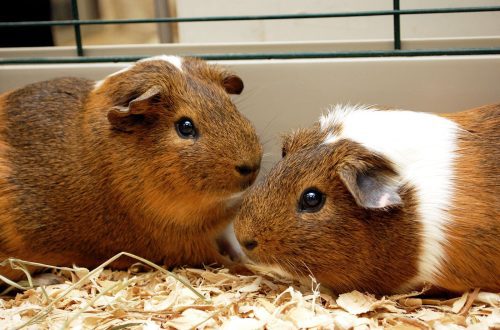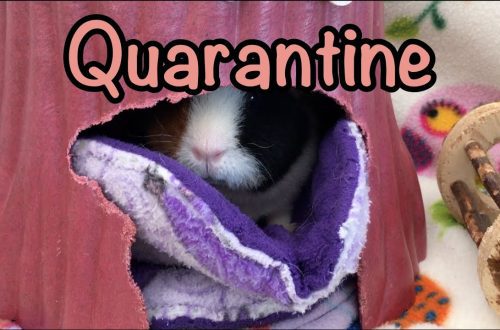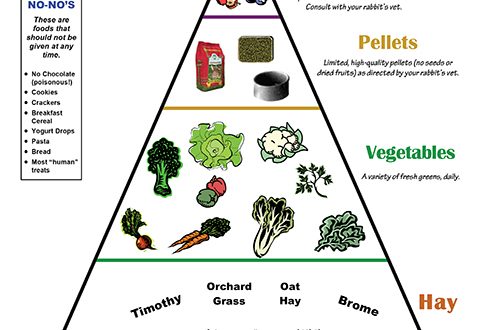
Hamster cage: how to make the right choice
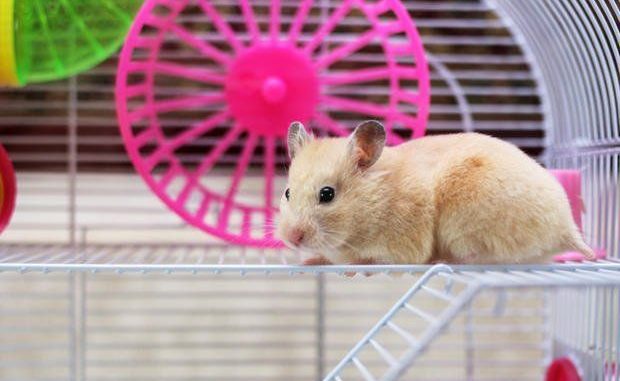
A cage for a hamster is not a prison, but his home. The task of the owner is to make sure that he feels comfortable and safe there. There are a variety of hamster cages available at pet stores. Asking the seller how to choose a home for a rodent is not worth it. A store employee may be interested in selling the most expensive option, or simply not understand the physiology and needs of these animals.
It is also not necessary for the owner to know everything about hamsters, but knowing how much space a tiny rodent needs and how different types of cages differ will be useful.
Contents
Basic parameters
Size
The minimum bottom size is 50×30 cm for dwarf species and 60×40 cm for Syrians. There is no maximum limit, but larger cages are harder to clean and take up a lot of space. Many people get a hamster as a pet just because it doesn’t take up much space.
Huge cages that can be seen in a pet store are designed for large rodents – chinchilla, guinea pig. Tiny ones are also sold there – 20×25 cm.
A small cage may be offered for sale as a home for dwarf species, but in reality they are only used for brooding, quarantine during illness, mating. In other words – for the short-term maintenance of the animal.
It is a mistake to assume that a small area for living will be enough for a small hamster. Rodents clearly divide their dwelling into zones: a bedroom, a toilet corner, a pantry, a dining room, a space for games.
So that the zones do not intersect, there must be enough space. You can not clutter up the space inside.
Types of cages for rodents
Trellised
Metal with a plastic pallet: one of the most common options for keeping a rodent. Advantages:
- easy to wash and disinfect;
- it is convenient to mount accessories (wheel, drinker, feeder);
- constant supply of fresh air.
Disadvantages:
- high noise level (the hamster gnaws the rods, shakes the cage);
- open on all sides: the animal scatters the filler, is not protected from the cat;
- running and climbing on the bars, the hamster can damage the paw;
- The bars interfere with the observation of the animal.
Some of the disadvantages are eliminated by the manufacturer himself with a well-thought-out design. If the pallet is deep enough, the filler will not scatter. If the floors and ladders inside are made of plastic, the chance of injury is reduced. An example is Ferplast “Criceti 15” – a large cage with a deep plastic tray. It is also suitable for connecting pipes or other modules.
The design of such cells is approximately the same, but the color scheme is rich: the plastic part (pallet) comes in a variety of shades, and the metal rods are painted black or white. Girls will love Ferplast’s Laura pink plaid.

For reasons of aesthetics and fashion for eco-friendly design, you can find a lattice cage made of natural wood. The “Hamsterville” Ferplast cage made of bleached pine is even equipped with wooden accessories: a wheel, ladders and floors, a house, a feeder. But although the tree is impregnated with a special moisture-proofing compound, it gradually absorbs odors and is difficult to clean.
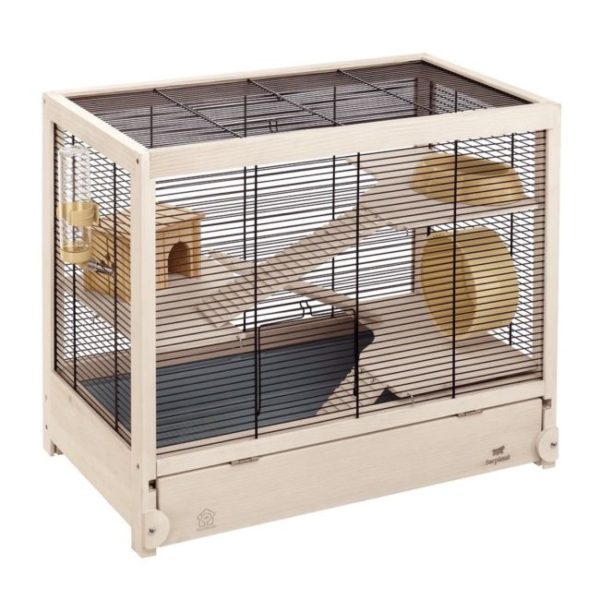
The wooden cage is equipped with a retractable tray, which allows cleaning without removing the animal from the house.
Aquarium or showcase
Glass terrariums for keeping hamsters are rarely used. Gone are the days when the dzhungarik was kept in an ordinary three-liter jar. Aquarium Benefits:
- convenient to observe the pet;
- less noise (the animal does not gnaw on rods);
- inaccessibility for the cat;
- filler is not scattered around.
A good overview in this case is a dubious plus: a transparent cage can be made of plastic, it is not necessary to keep the rodent “behind the glass”.
The disadvantages outweigh:
- difficult to wash (heavy, glass is very easily soiled);
- inappropriate configuration (high walls);
- poor ventilation (greenhouse effect);
- it is difficult to arrange the equipment (wheel, drinker).
The height of the aquarium should be no more than 30 cm, so that the animal has enough oxygen. Approximate parameters: 70x50x30 cm. It is forbidden to use a solid top cover. Leaving it completely open is also undesirable, the pet can run away. Usually close the glass house with a special mesh.
There are special aquariums for rodents with ventilation holes and a sliding front wall. Their height is much less than that of fish tanks.
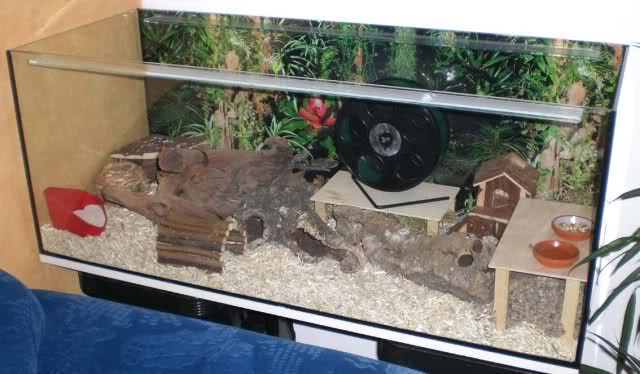
A wooden panoramic cage with transparent plexiglass doors is called a showcase. They are made to order. This is an advantage: the dwelling will be the right size, fit into the interior. This is a drawback – the price starts from several thousand rubles. The bottom must be made of plastic or stainless steel, otherwise the tree will quickly become unusable from the feces of the animal.
Disadvantages:
- a wooden display case absorbs odors and starts to smell bad;
- it is impossible to carry out high-quality disinfection after the death of a hamster;
- bugs and insects can start in the tree. Treating a tree is dangerous for a hamster, who will sharpen its teeth on it, and untreated wood is prone to deterioration.
A large three-story showcase looks very impressive, but is designed for jumping and climbing animals – chinchilla, rat. The hamster is a resident of the plains, he will not appreciate such a structure and can be injured when falling from a height.
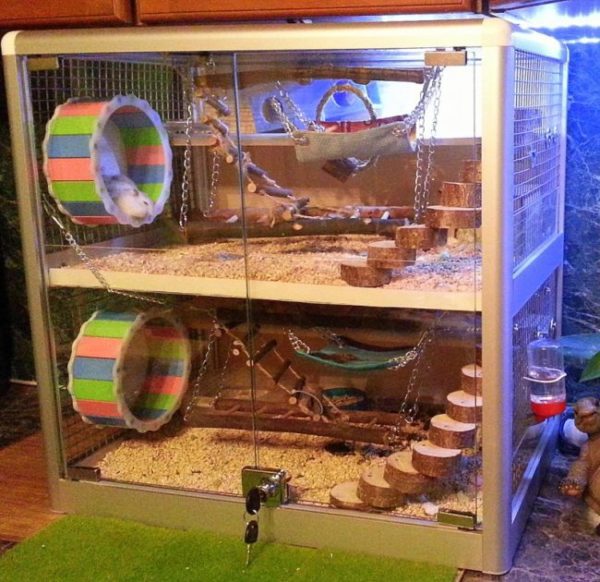
If you need a closed cage for reasons of cleanliness, then instead of an aquarium and a shop window, you should look at the so-called dunes.
Single-tier wooden showcases of industrial production are most often designed for large rodents – rabbits, guinea pigs.
plastic dune
Dune is a cage with transparent walls and a metal grill at the top for good ventilation. Combines the advantages of a lattice cage and an aquarium. Opening roof and removable drip tray make cleaning easy. A closed cage does not allow the animal to scatter the filler around, and it is more convenient to watch the pet than through the bars.
Latticed with plastic inserts
There are interesting options, in which part is lattice, made of rods, and part is a plastic insert. They are rich in equipment (floors, wheel, ladders, house), and their main advantage is plastic pipes. It is possible to purchase additional sections and pipes, creating real labyrinths and space for the game. Hamsters in nature run up to 10 km daily, so ensuring the proper level of activity is the most important condition for the health of a rodent.
Simple two-story cages are not suitable for hamsters – the inhabitants of the plains do not have the concept of “height”, do not know how to land on all four paws, and can suffer if they fall from above. Modular housings with pipes allow you to create a safe home with 2-3 floors, and even more.
Some cool cages:
- IMAC two-tier cage for rodents “Fantasy” 58x38x38,5 cm is suitable for the Djungarian hamster, very bright and beautiful due to colored plastic – it will serve as a decoration for any children’s room;
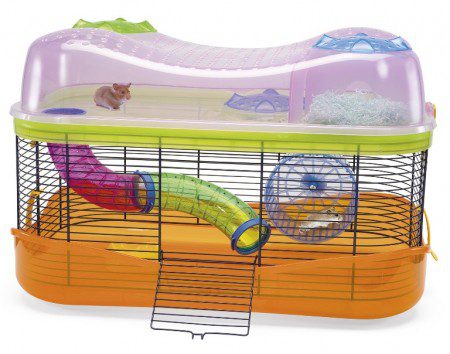
- The Syrian hamster will feel great in the three-level terrarium Ferplast “Duna Fun Large” 71,5x46x41 cm;
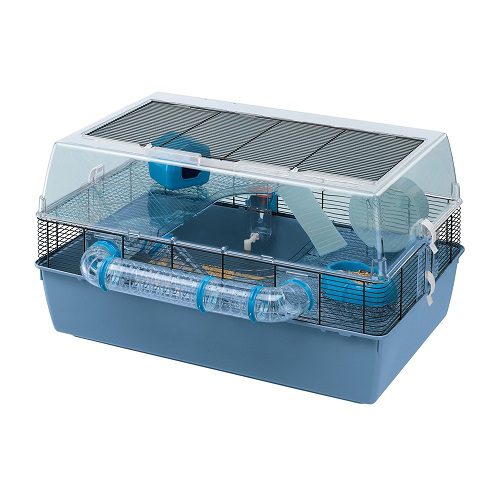
- The prefabricated (modular) cage Ferplast “Circus Fun” itself is too small, but it is possible to install pipes to connect with other prefabricated cages: Combi, Lab;
- Spacious Savic “Hamster Metro” 80x50x50 cm is a super option for a hamster of any breed.
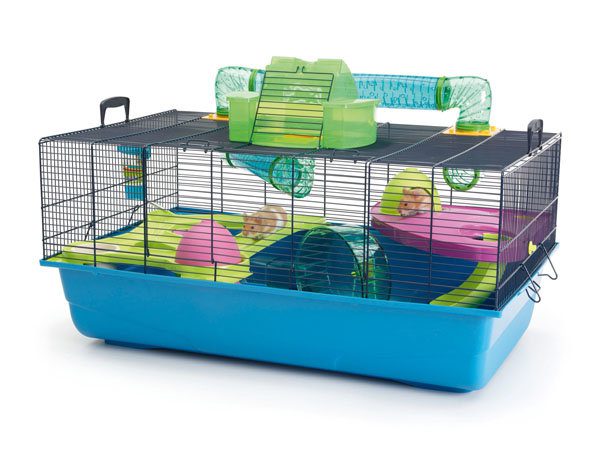
How to connect two hamster cages
If there are two small cages, you can combine them, instead of buying one large cage for a grown pet. Latticed houses are connected by removing (biting out) rods or a whole wall and fastening them with wire to another cage. For hamsters, horizontal expansion is preferred over multi-story mansions.
Some models have special round holes in the walls, threaded for attaching modules of the same company, expanding the area of uXNUMXbuXNUMXbthe dwelling at the expense of external space. The module can be a pipe, a corridor. Pipes are sometimes braided around the cage around the perimeter, or they can be used to connect two cages. The diameter of the corridor should correspond to the size of the animal.
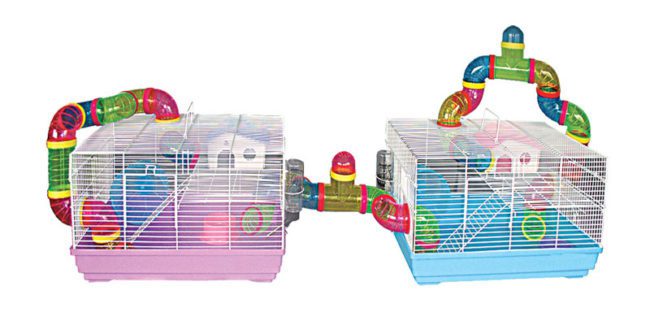
How much does a hamster cage cost
Type of cage Price: depends on the size and configuration:
- lattice with a plastic pallet 1000-8000 r;
- lattice wooden about 6000 r;
- showcase: to order 6000-27000 r;
- dune 2500-6000 r;
- combined modular 3000-9000 rub.
The cheapest ones are metal combined with a plastic pallet, but you will have to buy additional equipment. It is inexpensive to buy a used cage, but it must be made from materials that can be disinfected. The wooden cage can only be new.
The cost of the cage significantly exceeds the cost of the animal itself, often people are not ready to invest a lot of money in the purchase. Then it is better to take a simple but spacious one. The best cage for a hamster is not always the most “cool” in appearance, because the animals themselves are deprived of color vision and the concept of aesthetics. Metal ones are sold at lower prices than plastic ones.
Different breeds have different standards
Djungarian and Syrian hamsters have significant differences, both in the nature of behavior and in size. Therefore, recommendations for choosing a cage for each breed will be different. Detailed information can be found at the links:
- How to choose a cage for a Djungarian hamster
- How to choose a cage for a Syrian hamster
How much does a hamster cost with a cage
Often on ad sites you can see offers for the sale of a hamster with a cage. In this case, the presence of the animal not only does not increase the price, but, on the contrary, makes the purchase quite profitable. Depending on the region, the price ranges from 500 to 2500 rubles. When purchasing a hamster with a ready-made home, you need to make sure that the cage is not too small, as is often the case.
Where to put a cage with a hamster
Animals are sensitive to changes in the environment, so it is better to decide in advance where to put the pet’s cage, and if possible, do not move it. This place should be inaccessible to direct sunlight, protected from drafts. Do not place the cage too close to the battery.
There should not be indoor plants or other objects around that an inquisitive rodent can reach (curtains).
It is undesirable to allow other pets to the hamster house. The pet is protected as much as possible from noise (TV, music). The room should have fresh clean air (without tobacco smoke), a constant air temperature of 20-22 C.
The dwelling of the rodent is located on a hill (table, chest of drawers). So it is more convenient to watch your pet, and most importantly – the hamster will not be scared every time a person approaches.
Instinctively, the rodent perceives everything that it sees from above as a threat, because the main enemies of hamsters in nature are birds of prey.
The bedroom most corresponds to hamster requests. It should be noted here that the hamster is a nocturnal animal that produces a surprising amount of noise. This prevents many from falling asleep, and the place for the cage is selected taking into account not only the needs of the hamster, but also personal comfort.
Equipment
Expensive modern cells are equipped with the necessary accessories. If not, the equipment is purchased additionally:
- house;
The hamster should have a place where he hides, feels protected. A 14-15 cm house is suitable for the Syrians, and about 10 cm for the Dzhungars. It must be without windows, otherwise the hamster may get stuck in the hole and die from suffocation.
The houses are made from different materials. It is optimal to use a wooden one without a bottom, or high-quality plastic (by Savic, Trixie, Ferplast).
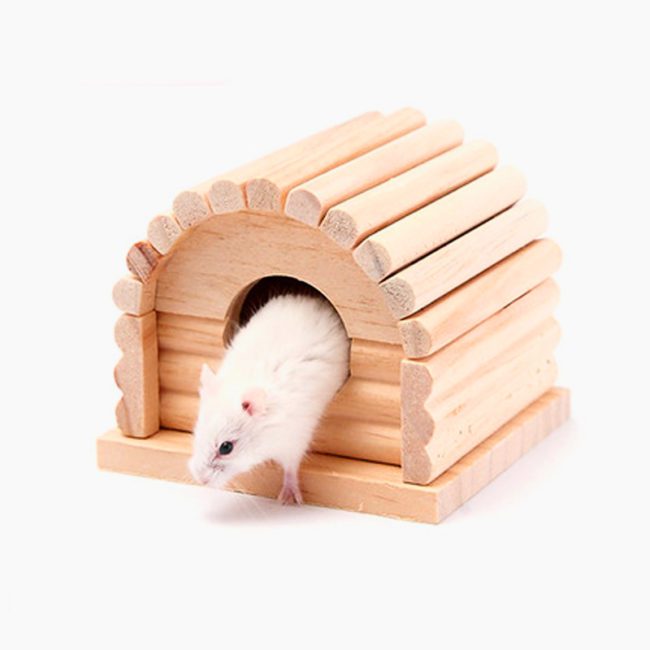
Ceramic ones are very beautiful, but it can be cold for a pet in it. Typically, such a shelter is used as a fallback summer option.
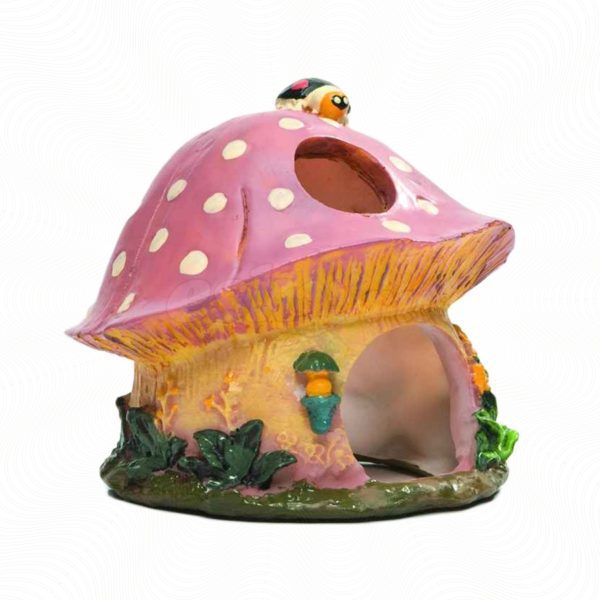
An additional house can also serve as a wicker nest made of straw, which will gradually be eaten by the tenant.
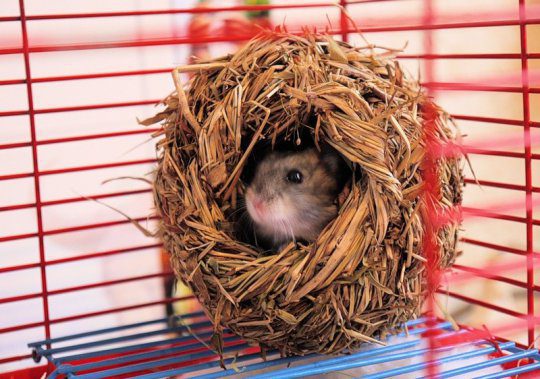
- wheel;
The ability to run is vital for hamsters., but in order for the wheel to bring benefits, and not harm to health, it must be chosen correctly. It should be large enough in diameter: for the Djungarian hamster 16-18 cm, for the Syrian hamster – 18-22 cm. It is better if the surface is solid: the mesh or rods can lead to leg injuries.
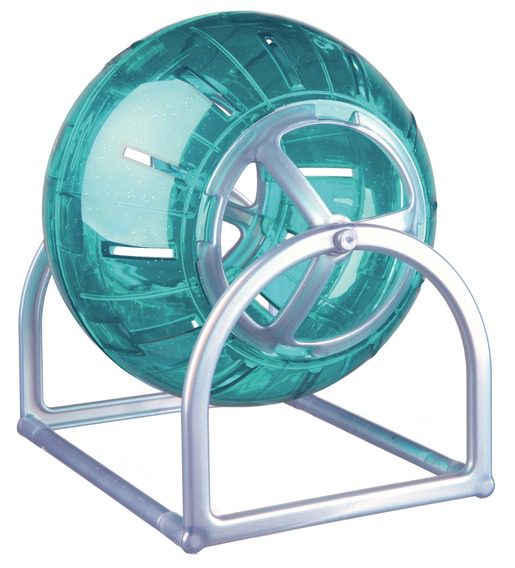
The suspension wheel makes much more noise, is attached to the bars of the lattice cage. The standing wheel is well suited for the dunes, almost silent with proper care (lubrication) and a thick layer of filler. Material – plastic, wood or iron fine mesh (Trixie).
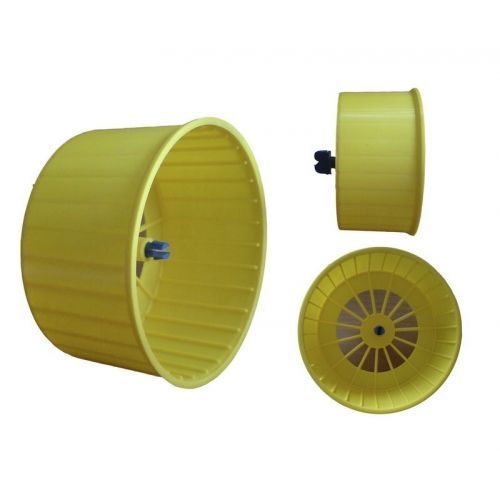
An unusual alternative to a wheel is a running plate. More information can be found in the article on hamster wheels.
- drinker.
Leakproof automatic drinkers (ball or nipple) are preferred. The capacity may be small, as it is recommended to change the water to fresh water every day.
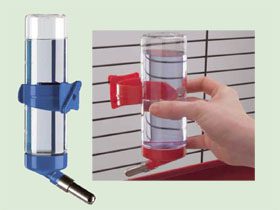
A wheel, a house and a drinker are a necessary minimum. You will also need a feeder (small bowl).
If you equip a play complex with slides, tunnels, bridges and swings, then the hamster will be provided with everything for a happy and long life.
We have listed only the most necessary, information about other accessories can be found in the article what you need to keep a hamster in the house.
It can be difficult to decide which cage to choose – the choice is so wide in modern pet stores and on the Internet. To do this, it is worth studying the pros and cons of different types of cells.
Conclusion
A hamster cage is the main expense for a tiny rodent. But if you approach the choice responsibly, the animal will delight you with activity and good health, and its home will fit into the interior of the room. You can argue about which cell is better, but there is no definite answer, everything is individual.
Choosing the Right Hamster Cage
4.2 (84.71%) 17 votes





